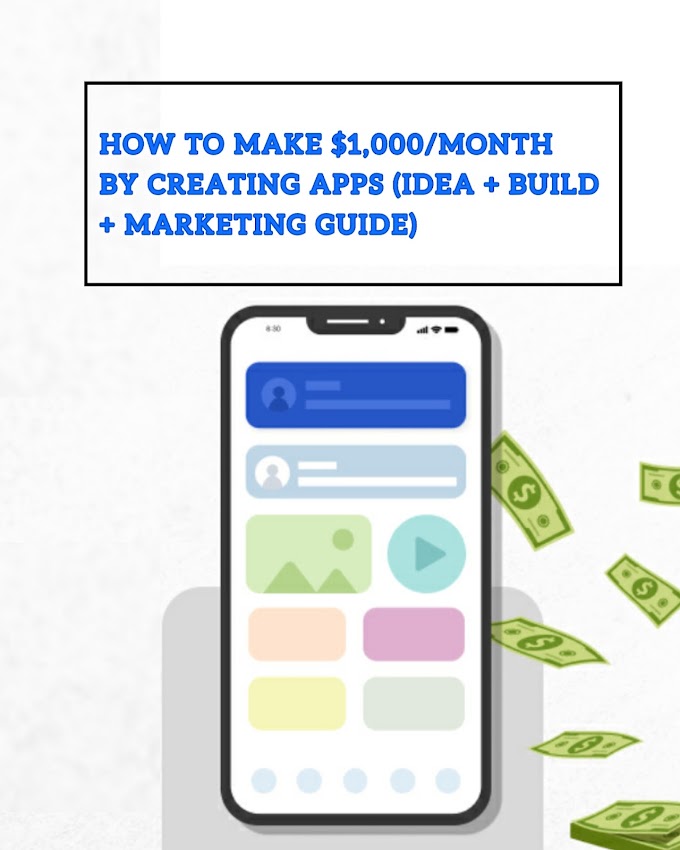How to Start a Successful Online Store.
Introduction:
Starting an online store can be a great way to turn your passion into a profitable business. With the rise of e-commerce, it's easier than ever to create a successful online store. In this article, we'll guide you through the process of starting an online store, from finding the right niche to optimizing your website for SEO.
Image by rawpixel.com on Freepik
- Choose Your Niche
Choosing the right niche is crucial to the success of your online store. Your niche should be something that you are passionate about and have knowledge in, but also has a market demand. Research popular niches using tools like Google Trends, Amazon Best Sellers, or Etsy to see what products are in demand. Analyze the competition in your niche to understand the level of demand and competition.
Create a Business Plan
Creating a business plan is an essential step in starting any new business, including an online store. A well-written business plan will include details on your niche, target audience, competition, marketing strategies, financial projections, and a plan for how you will grow your business. Your business plan will guide you through the process of starting your online store and will help you stay organized and focused on your goals.Register Your Business
Once you have your business plan in place, it's time to register your business. This involves choosing a business name, registering with your state, and obtaining any necessary licenses and permits. Depending on your location and the type of products you sell, you may need to obtain a sales tax permit or a seller's permit.Choose Your E-Commerce Platform
Your e-commerce platform is the software that you will use to build and manage your online store. There are many e-commerce platforms available, including Shopify, WooCommerce, and BigCommerce. Each platform has its own features, pricing, and level of customization. Choose the platform that best fits your needs and budget.Set Up Your Online Store
Once you've chosen your e-commerce platform, it's time to set up your online store. This involves choosing a theme or design, adding your products, setting up payment and shipping options, and creating your policies and terms of service. Your online store should be user-friendly and easy to navigate. Make sure your product descriptions are clear and detailed, and your images are high-quality and showcase your products.Optimize Your Website for SEO
Search engine optimization (SEO) is the process of optimizing your website to rank higher in search engine results pages (SERPs). SEO is essential for driving traffic to your online store and increasing sales. Some SEO strategies include using relevant keywords in your product descriptions, optimizing your images, building backlinks to your website, and creating high-quality content. Make sure your website is mobile-friendly, has a fast load time, and is secure.Market Your Online Store
Marketing is essential for driving traffic and sales to your online store. There are many ways to market your online store, including social media marketing, email marketing, content marketing, and paid advertising. Choose the marketing strategies that are most effective for reaching your target audience. Social media platforms like Facebook, Instagram, and Twitter are great for building brand awareness and engaging with your audience. Email marketing is a great way to promote your products and communicate with your customers. Content marketing, such as blogging or creating videos, can help attract new customers and establish your brand as an authority in your niche. Paid advertising, such as Google Ads or Facebook Ads, can help drive targeted traffic to your online store.Analyze Your Results
Analyzing your results is essential for measuring the success of your online store and making informed decisions about how to grow your business. Use analytics tools like Google Analytics to track your website traffic, conversion rates, and other metrics. Use this data to identify areas for improvement and make changes to your online store and marketing strategies.
When it comes to SEO strategies, there are a few additional tactics you can implement to boost your online store's visibility:
Use long-tail keywords: Long-tail keywords are more specific and targeted than generic keywords, making them easier to rank for in search engines. Use tools like Google's Keyword Planner or Ahrefs to research long-tail keywords related to your products and niche, and incorporate them into your product descriptions, titles, and other website content.
Optimize your product images: High-quality images can help sell your products and improve your website's SEO. Make sure your images are optimized for web use by compressing them and adding alt text descriptions that include relevant keywords.
Use internal linking: Internal linking is the practice of linking to other pages on your website from within your content. This helps search engines understand the structure of your website and can improve your rankings. Make sure your internal links are relevant and add value to the user experience.
Build backlinks: Backlinks are links from other websites that point to your online store. Building high-quality backlinks can improve your website's authority and boost your rankings. You can build backlinks by creating valuable content that other websites want to link to, guest posting on relevant blogs, or reaching out to other websites to request a link.
Use social media: Social media is a powerful tool for driving traffic to your online store. By creating a presence on social media platforms like Facebook, Instagram, and Twitter, you can engage with your target audience and promote your products. Share your blog posts, product photos, and special promotions on your social media accounts to encourage your followers to visit your website.
Offer valuable content: In addition to promoting your products, offering valuable content can help drive traffic to your website and improve your SEO. Consider starting a blog or creating how-to videos related to your products or niche. By providing valuable information to your audience, you can establish yourself as an expert in your field and build trust with your customers.
Optimize your website for mobile: With more and more people using their mobile devices to browse the internet, it's essential that your online store is optimized for mobile use. Make sure your website is mobile-friendly and loads quickly on all devices. This not only improves the user experience but can also improve your search engine rankings.
- Utilize email marketing: Email marketing is a powerful way to stay in touch with your customers and encourage repeat business. Collect email addresses from your customers and use email marketing software to send targeted campaigns that promote your products and special promotions.
Offer exceptional customer service: Providing exceptional customer service can help build customer loyalty and increase your sales. Respond promptly to customer inquiries and concerns, and make it easy for customers to reach out to you with questions or issues.
Analyze your data: Continuously analyzing your website's data can help you identify areas for improvement and optimize your strategy. Use tools like Google Analytics to track your website's traffic, engagement, and sales. Look for patterns and trends in the data, and use that information to make informed decisions about your marketing and SEO strategy.
By implementing these SEO strategies and continuously analyzing and optimizing your online store, you can drive more traffic to your website and increase your sales. Remember to stay focused on your target audience and their needs, and always be willing to adapt and make changes to your strategy as needed. With dedication and hard work, you can start and grow a successful online store.
In conclusion, starting a successful online store requires a combination of effective SEO strategies, marketing tactics, and ongoing dedication. By implementing the tactics outlined above and continuously analyzing and optimizing your strategy, you can increase your chances of success and drive more traffic to your website. Remember to stay focused on your target audience and their needs, and always be willing to adapt and make changes to your strategy as needed.






0 Comments